Venice Italy Travel Tips And Things To Know
Venice Italy Travel Tips And Things To Know. In this blog,
we'll cover all you need to know before travelling to Venice like what's the
best time to visit, how to get around the city and use public transportation,
best apps to use in Venice and other useful information.
#Venice #Italybestplaces #Venicecanals
#Venice #Italybestplaces #Venicecanals
Here are 17
essential tips:
17. The map
of Venice
Venice is
located in the Venetian Lagoon. The city of Venice lies in the center of the
lagoon and is connected to the mainland by a road and train cosway. The train
station of Santa Lucia and parking lots are located northwest. This is usually
your gateway to Venice.
Close to the station is the Venetian ghetto, one of the first Jewish ghettos in the world.
Venice Grand Canal
The main waterway in Venice which runs through the city is called Grand Canal. Here you can find the famous Venetian palazzos, churches and the impressive Rialto Bridge.
Saint Mark's Square, the center of Venice, home to Basilica di San Marco, the Campanile bell tower and Doges Palace is located Southeast of Rialto Bridge. If you continue further East you will find Venetian Arsenal, an ancient shipyard and armory and now one of the main venues of the Venetian Biennale. Islands the Venetian lagoon include Murano, famous for Venetian or Murano glass, colorful island of Burano, Torcello, San Michelle cemetery island, and others.
Close to the station is the Venetian ghetto, one of the first Jewish ghettos in the world.
Venice Grand Canal
The main waterway in Venice which runs through the city is called Grand Canal. Here you can find the famous Venetian palazzos, churches and the impressive Rialto Bridge.
Saint Mark's Square, the center of Venice, home to Basilica di San Marco, the Campanile bell tower and Doges Palace is located Southeast of Rialto Bridge. If you continue further East you will find Venetian Arsenal, an ancient shipyard and armory and now one of the main venues of the Venetian Biennale. Islands the Venetian lagoon include Murano, famous for Venetian or Murano glass, colorful island of Burano, Torcello, San Michelle cemetery island, and others.
The famous
Venice International Film Festival takes place on Lido which separates the
lagoon from the Adriatic Sea. To get a better sense of the distance: a 1.3-mile
long walk from Santa Lucia train station to St. Mark's Square takes about 30
minutes.
16. Weather
and Climate
Venice has
Mediterranean climate with four seasons and the temperatures range from 32
degrees Fahrenheit in winter to 95 degrees Fahrenheit in summer, however, due
to the nearby sea the temperatures are usually not too low even in the winter.
The air is usually humid year-round, rain is difficult to predict and the
weather can change within a few hours.
Spring offers moderate temperatures with lows in the 40s and highs in the 70s, summers are hot and humid ranging from 60s to 90s. Weather in the fall is again more pleasant with temperatures ranging between the 40s and low 70s and the winter months are not extremely cold usually between 30s and low 50s.
When Venice floods
Unfortunately, Venice is sometimes flooded. In fact, this happens so often that the phenomenon has its own name: Acqua Alta or high water in English. The risk of Acqua Alta gets higher in winter so make sure to check the weather forecast even when you're in Venice.
Spring offers moderate temperatures with lows in the 40s and highs in the 70s, summers are hot and humid ranging from 60s to 90s. Weather in the fall is again more pleasant with temperatures ranging between the 40s and low 70s and the winter months are not extremely cold usually between 30s and low 50s.
When Venice floods
Unfortunately, Venice is sometimes flooded. In fact, this happens so often that the phenomenon has its own name: Acqua Alta or high water in English. The risk of Acqua Alta gets higher in winter so make sure to check the weather forecast even when you're in Venice.
15. Best
time to visit
Best time to
visit Venice is between April and June in the spring and September and October
in the fall when the weather is cooler but still pleasant to walk outside and
the herds of tourists are gone. However, Venice is a popular destination
year-round and there can be a lot of tourists visiting practically at any given
day. And since Venice is known to hold special events such as the carnival in
winter or the Venice International Film Festival in late summer, if you are not
planning to be there for these events make sure to check that you are not
travelling on those dates since your accommodation will likely cost more.
14. Venice
entry fee
From May
2019 Venice has introduced an entry fee for daily visitors. The entry fee for
2019 is fixed at 3 EUR and will eventually cost between 3 and 10 EUR, depending
on the season. However, if you're staying in Venice overnight you will be
excluded from paying the entry fee as you are already paying the tourist city
tax with your hotel.
13. CURRENCY
The currency
used in Venice is Euro, used in most European countries, including Italy. €1 is
worth approx. $1.13. While most hotels, stores, and restaurants in Venice
accept major credit cards, it is wise to always have some Euros in your wallet.
12. General
information
Venice is an
extraordinary city but with its uniqueness come all sorts of things one should
know before travelling there. Unless you're staying in a luxury hotel where your
baggage is handled by someone else don't bring heavy baggage as you will probably
have to cross a few bridges before arriving at your hotel. You can also leave
your baggage in certain areas such as the train station.
Don't feed the pigeons. While pigeons are almost a
symbol of Venice’s St Mark’s Square, it is illegal to feed them.
It is also
illegal to eat on the walls canals or stairs as well as to swim in the canals.
If you want to swim Venice has its own beach on the outer side of lido.
Public
toilets will cost you money, usually between €1 and €1.5. If you visit bars
restaurants or museums, toilets are usually free for the guests.
Exploring Venice can sometimes seem like walking in the labyrinth. However, don't panic. There are a lot of signs around town to get you unlost.
Drinking water: tap water in Venice is perfectly safe to drink. Additionally, drinking water is available for free at numerous water fountains spread out across Venice where you can fill up your water bottle and even save some money that way.
Exploring Venice can sometimes seem like walking in the labyrinth. However, don't panic. There are a lot of signs around town to get you unlost.
Drinking water: tap water in Venice is perfectly safe to drink. Additionally, drinking water is available for free at numerous water fountains spread out across Venice where you can fill up your water bottle and even save some money that way.
11. Safety
Venice is generally
a very safe destination, so you normally shouldn’t be worried about specific
areas to avoid or staying inside at night. However, typical for all major
tourist destinations, pay attention to pickpockets, especially in the crowded
areas close to major attractions. For emergency services dial 112.
10. Where to
stay
While
staying anywhere in Venice is an interesting experience, there are areas which
will make your stay even more exciting. The best places to stay are: The San
Marco district, stretching from St Mark’s Square to the Accademia bridge. This
way you will be located right in the the historic center of Venice.
Castello,
where you will find many luxury hotels and nice bars and restaurants. San Polo
district, located close to the Rialto Bridge, and home to shops and bars
selling the famous ciccetti, a Venetian version of Spanish tapas.
Dorsoduro if you want to stay in the area with fashion boutiques and close to university or Canareggio, located close to the train station and the Jewish Ghetto. But Venice is not too big and as long as you are staying in centro storico or the historic center in English, major attractions are just minutes away. The average price for a hotel in Venice is $115. Of course, you can get your accommodation for less than that. If you want to save on accommodation, you can consider staying on the mainland, however, you will have to travel to Venice every day instead of being located close to the major attractions.
Dorsoduro if you want to stay in the area with fashion boutiques and close to university or Canareggio, located close to the train station and the Jewish Ghetto. But Venice is not too big and as long as you are staying in centro storico or the historic center in English, major attractions are just minutes away. The average price for a hotel in Venice is $115. Of course, you can get your accommodation for less than that. If you want to save on accommodation, you can consider staying on the mainland, however, you will have to travel to Venice every day instead of being located close to the major attractions.
9. Transportation
Venice has
two airports: Marco Polo, the main airport, located in the Venetian lagoon and
Treviso airport, mostly used by low-fare airlines such as Ryanair. To get to
Venice from Marco Polo, you can choose between the following options: Either
airport bus or local bus usually departing every 30 minutes. A water bus which
will take you directly to Venice. While train is an option, we do not recommend
it, as you have to take a short bus ride to the station.
You can also take a
taxi or transfer which will cost you about 50 EUR, but, since Venice has no
roads, they can only drop you off at Piazzale Roma, next to Santa Lucia train
station. However, if you take a water taxi, departing from the same location as
the water bus, you can arrive directly to your destination in Venice, which is
very convenient, but also quite expensive, anywhere between 100 and 150 EUR.
Renting a
car is more or less useless since you can’t drive in Venice, unless, of course,
you are planning to travel to other places to Italy as well. Treviso airport is
located 25 miles from Venice. You can either take an ATVO bus which takes 70
minutes and drops you off at Piazzale Roma or Brazi bus that drops you off at
Tronchetto.
Arriving by train in Venice
In case you are arriving to Venice by train, you will arrive to Santa Lucia train station, which is conveniently located on the outskirts of the historic centre.
Arriving by train in Venice
In case you are arriving to Venice by train, you will arrive to Santa Lucia train station, which is conveniently located on the outskirts of the historic centre.
Arriving by
car in Venice
If you are arriving to Venice by car, you will
have to leave your car in one of the garages on the mainland or on the island,
close Santa Lucia station. Parking price is between 20 and 30 EUR per day or
even less if you want to leave your car further inland and take a short bus
ride to Venice.
Getting
around the city
The only transportation is Venice is on water.
It is even illegal to use bikes in Venice. So be prepared to walk a lot.
However, walking in Venice is rewarding since you can discover something
exciting almost around every corner.
Venice has a good public water transportation system called Vaporetto. There are several lines, and numerous stations. One-way ticket for 75 minutes costs 7.50 EUR, the 24-hour ticket is 20 and 48-hour Vaporetto ticket is 30 EUR. You can always get a water taxi. The cost of water taxi in Venice is 13 EUR for the initial charge plus 1.80 EUR per minute.
Venice Canals and Gondolas
And, of course, Venice is best known for gondolas, an iconic rowing boat that has been used for centuries. While gondolas offer a wonderful romantic experience, they are certainly not cheap. A 40-minute ride costs anywhere from 80 EUR during the day and over 100 EUR during the night. If you want to share a ride and save some money, there’s an app that offers that service.
Venice has a good public water transportation system called Vaporetto. There are several lines, and numerous stations. One-way ticket for 75 minutes costs 7.50 EUR, the 24-hour ticket is 20 and 48-hour Vaporetto ticket is 30 EUR. You can always get a water taxi. The cost of water taxi in Venice is 13 EUR for the initial charge plus 1.80 EUR per minute.
Venice Canals and Gondolas
And, of course, Venice is best known for gondolas, an iconic rowing boat that has been used for centuries. While gondolas offer a wonderful romantic experience, they are certainly not cheap. A 40-minute ride costs anywhere from 80 EUR during the day and over 100 EUR during the night. If you want to share a ride and save some money, there’s an app that offers that service.
8. Best apps
to use in Venice
Here is the
list of useful apps to use: Wi-Fi map or Wi-Fi finder which helps you find
Wi-Fi throughout Venice. Venice guide and offline city map offers in-depth
travel content and popular attractions. Use Google Maps or Apple maps for
walking. Due to narrow streets and tall houses, they do not operate great, but
you will certainly know which area you are in. Google Maps also lets you
download your map which is a great option if you don't want to use your roaming
. However, many people prefer to use paper map in Venice. AVM Venezia Official
App is great for public transportation info including a trip planner and
timetables.
Google Maps
and Moovit also offer Vaporetto information. hi!tide Venezia, to check timings
and heights of water in Venice in case of aqua alta. Il meteo, the Italian
weather app, available in English. Or, of course, any other good weather app.
Kishare, an app that connects travellers who want to share gondolas, lagoon
tours, and water taxis in Venice. AppTaxi, where you can book a water taxi. WC
Venice that helps you find public toilets in Venice. It also lets you find
drinking fountains. Trip advisor and Yelp for restaurant, hotel, museum, or
tour reviews.
7. Venice is
crowded
With limited
space and narrow streets, Venice can get very crowded, especially during
summer. So be prepared to wait in lines in restaurants, attractions, etc.
6. City
tours
Walking
tours of Venice are organized by professional tour guides who known great deal
about the city’s rich history, legends, etc. A great way to discover Venice.
Some providers even offer free walking tours of Venice, however, at the end of
the tour it is recommended to give a donation of your choice to the tour
guides.
5. For
international travellers
If you’re
coming from outside Europe, or the UK, you will probably need a special
European power adaptor to charge your phone and other devices. This is what the
European power plug looks like.
We recommend
purchasing a power adaptor before travelling to Venice. In fact, it is worth
buying the adaptor for the entire world so you can use in in other countries
too. You can purchase the prepaid SIM card to access internet on your phone
with one of the carriers like TIM or Vodafone in one of their stores in Venice,
however, be prepared to show your passport and fill out the documentation, as is
required by the Italian law. If you are from the US you can consider using
Google Fi. Alternatively, you can consider renting Pocket WiFi.
4. Food and
drinks
Venice
offers some great restaurants. We suggest using Yelp or TripAdvisor to find a
nearby place with good reviews. Try to avoid sitting down in the restaurants
next to major attractions, many times you can find a much better price/quality
ratio restaurants a street or two away from the main locations.
Same with bars.
For instance, a cappuccino just around the corner from St Marks Square cost us
only 1.50 EUR. There are also some great fast food pasta places, like Dal
Moro’s where you can get a delicious “Pasta to go” for just 7 EUR. Tipping in
Venice is not mandatory, however, most places will charge you a cover charge
for sitting down or what is is called coperto in Italian, usually a couple of
Euros per person and in some cases also the service charge on top, usually
around 10% of the bill. You can also buy something to eat or drink in a grocery
store. You can use Google Maps or a similar app to locate one near you. Or you
can even buy fresh fruits at a local street market.
3. Venice
city pass
Venice
offers a city pass called Venezia Unica where you can save some money if you
are planning to visit several museums and other attractions and want to skip
the line at some locations. With Venezia Unica city pass you also don’t need
any printed tickets and can use your phone instead. Venezia Unica works with
the AVM Venezia Official App that we described before. You can even choose a
city pass that combines attractions and public transportation.
2. Famous
events in Venice
Venice is
home to several world-famous events. The Venetian Carnival takes place every
year 40 days before Easter. Venetian Carnival has a long tradition and is
probably one the world’s most extravagant masquerades. The Biennale is a
prominent international art exhibition organized once every two years held over
the course of several months. In addition to the Biennale of Art, Venice hosts
the Biennale of Architecture, and other similar events. The Venice
International Film Festival is one of the most recognized film festivals in the
world, attracting celebrities from all around the globe.
1. Best views
of Venice
For the best
views of Venice, visit at least one of the following locations: Campanile di
San Marco, located on St Marks Square, with the highest observation deck in
Venice. The ticket costs 8 EUR. San Giorgio Maggiore, a small island, located
opposite St Marks Square. T Fondaco dei Tedeschi Rooftop Terace On top of
Rialto Bridge and Ponte dell'Accademia, The Palazzo Contarini del Bovolo Skyline
Rooftop Bar, with great panoramic city views. And other interesting locations.
There are lot many things to explore in Venice. Undoubtedly, it is one of the most beautiful cities in the World. Please make sure to read and to do some research on Venice Italy Travel Tips And Things To Know.
Also read, Italy best places to visit
Venice Italy Travel Tips And Things To Know
 Reviewed by blaisepatrick
on
January 29, 2020
Rating:
Reviewed by blaisepatrick
on
January 29, 2020
Rating:
 Reviewed by blaisepatrick
on
January 29, 2020
Rating:
Reviewed by blaisepatrick
on
January 29, 2020
Rating:


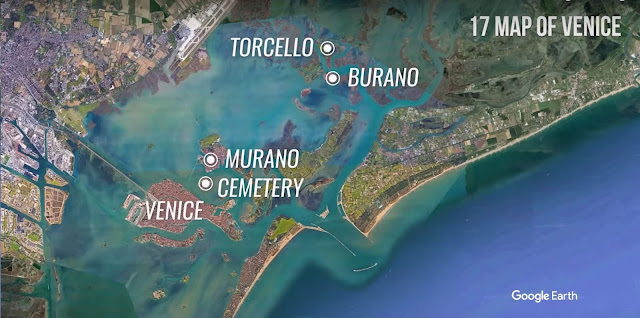

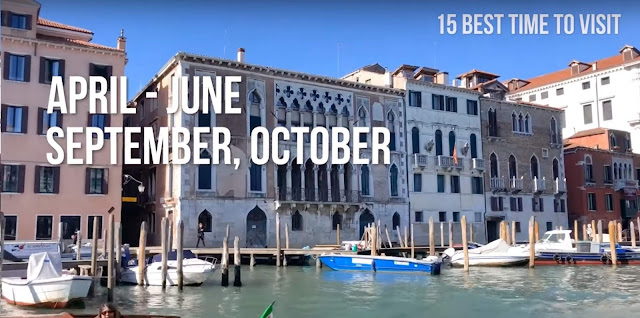


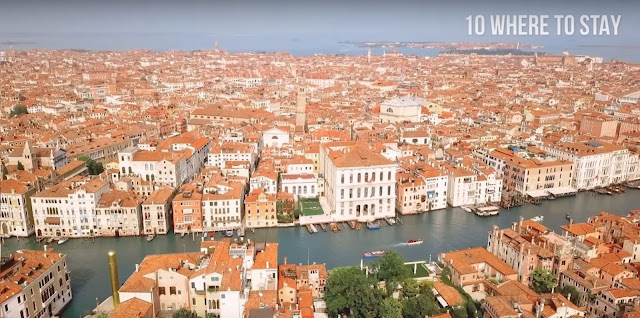



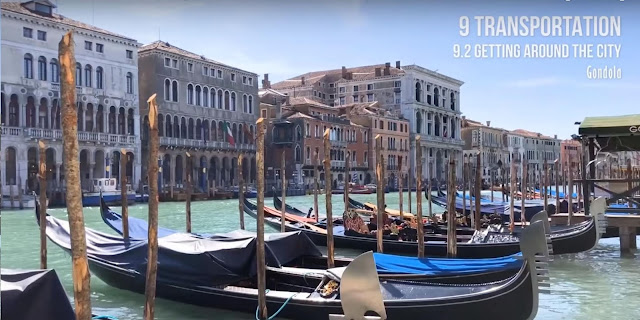



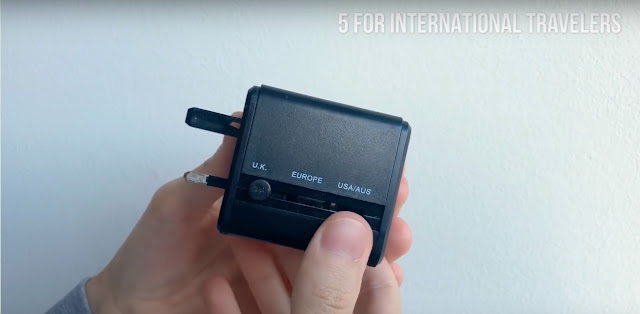


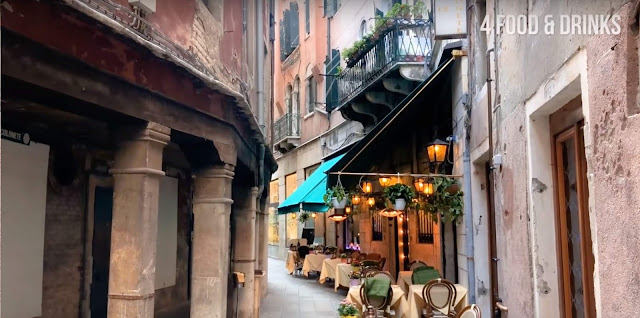

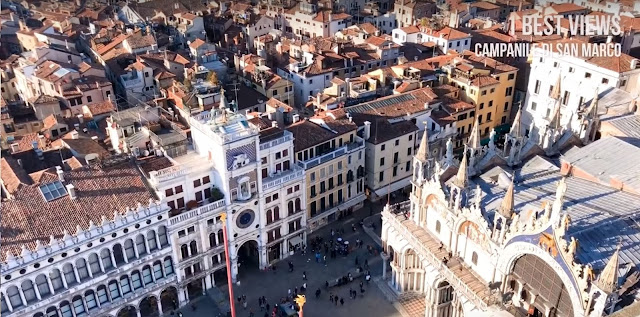
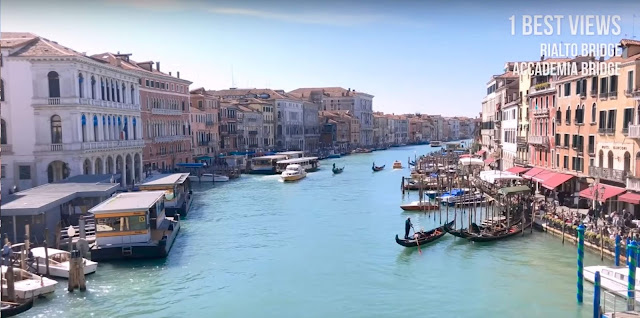
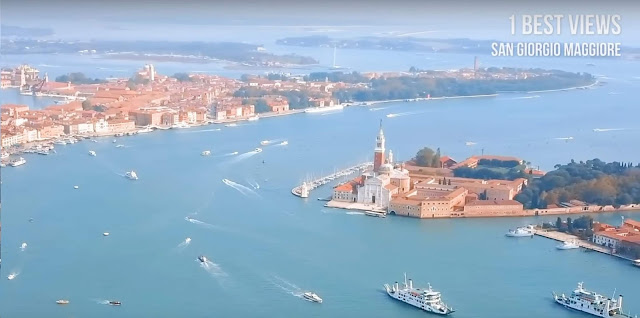


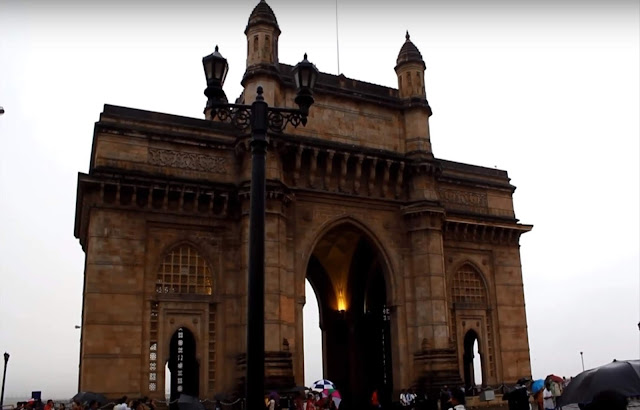
No comments:
Please do not enter any spam link in the comment box.